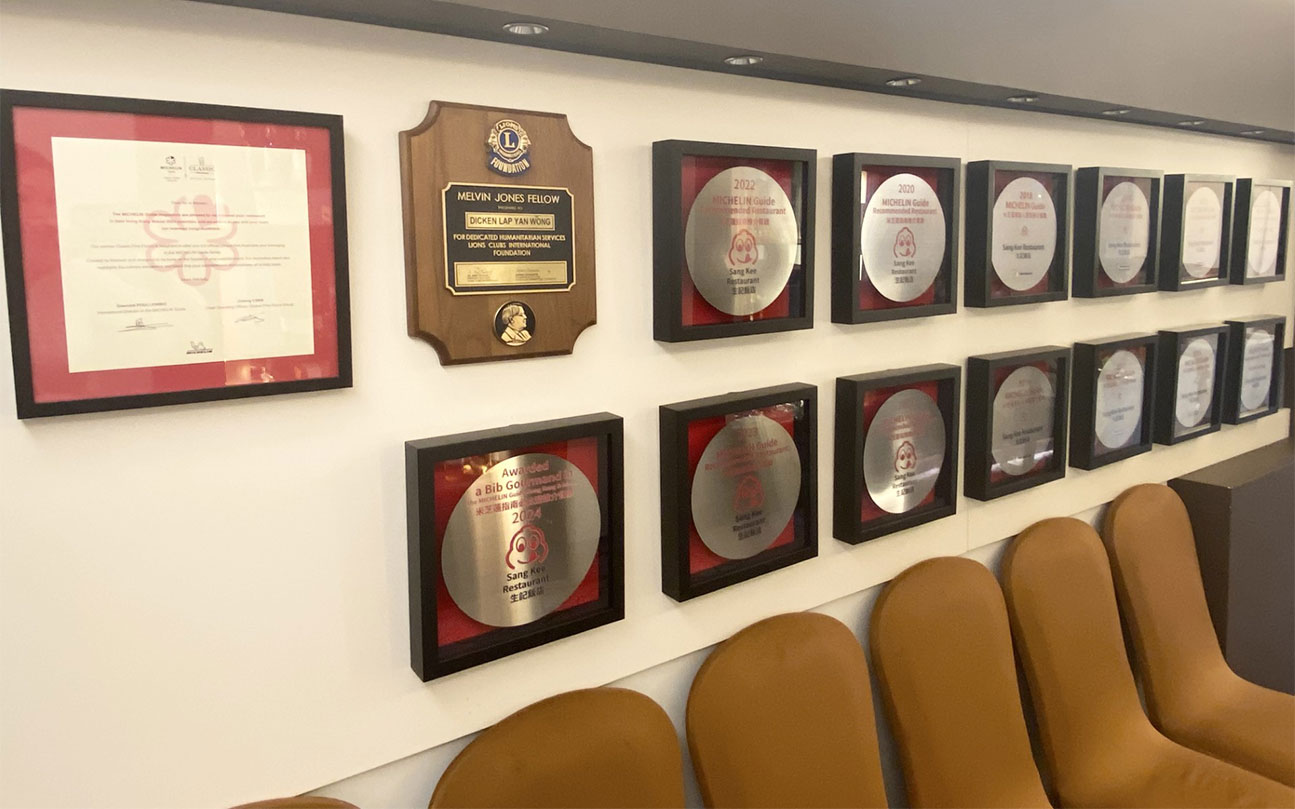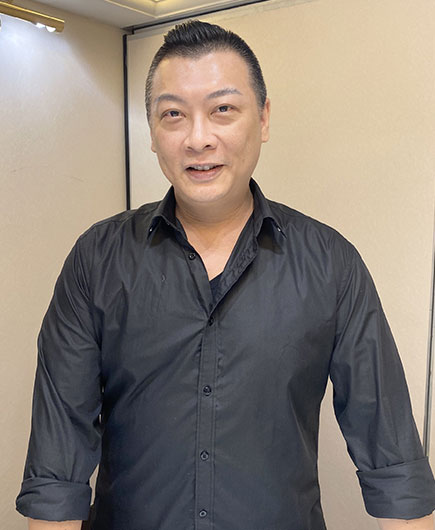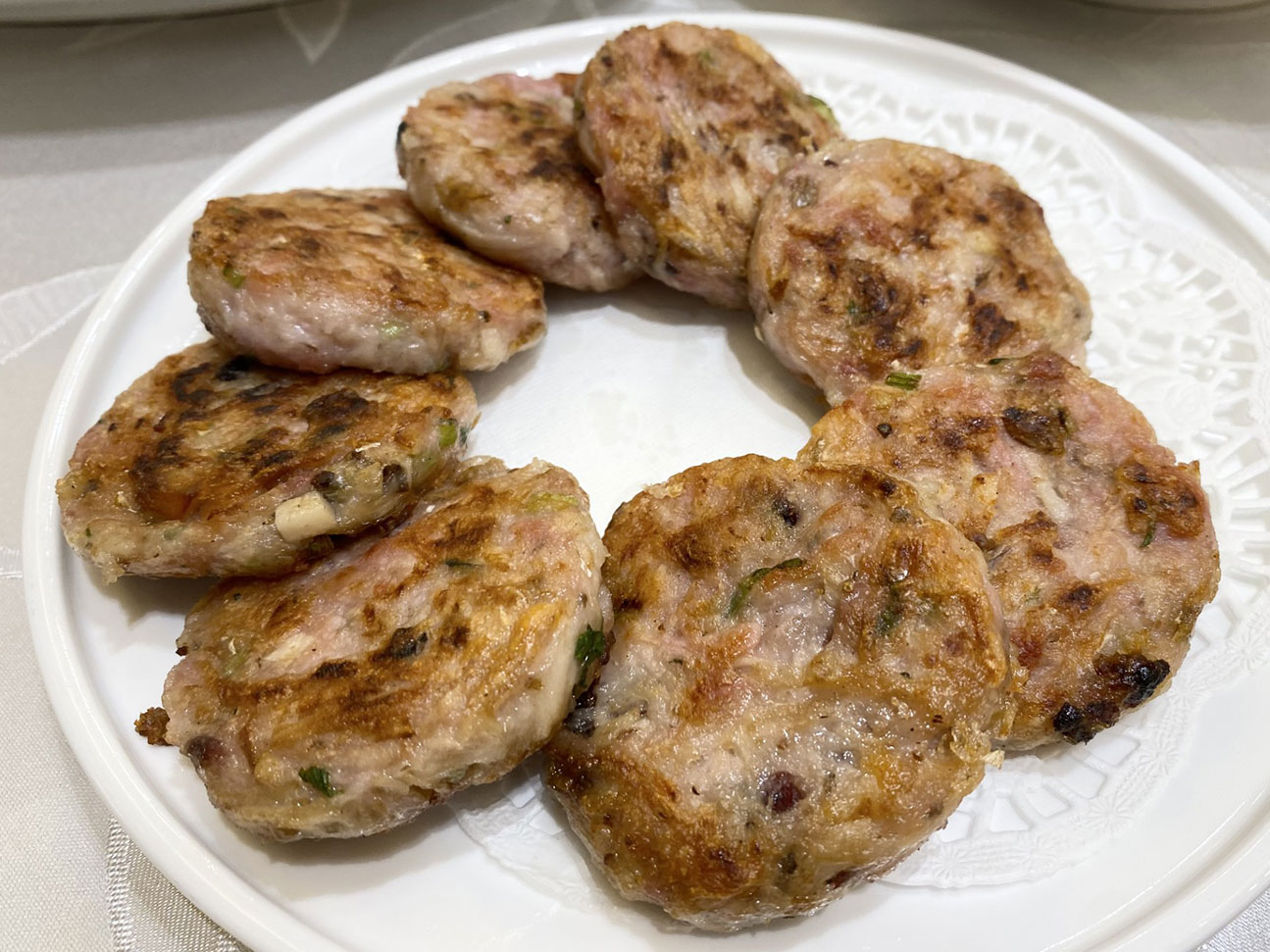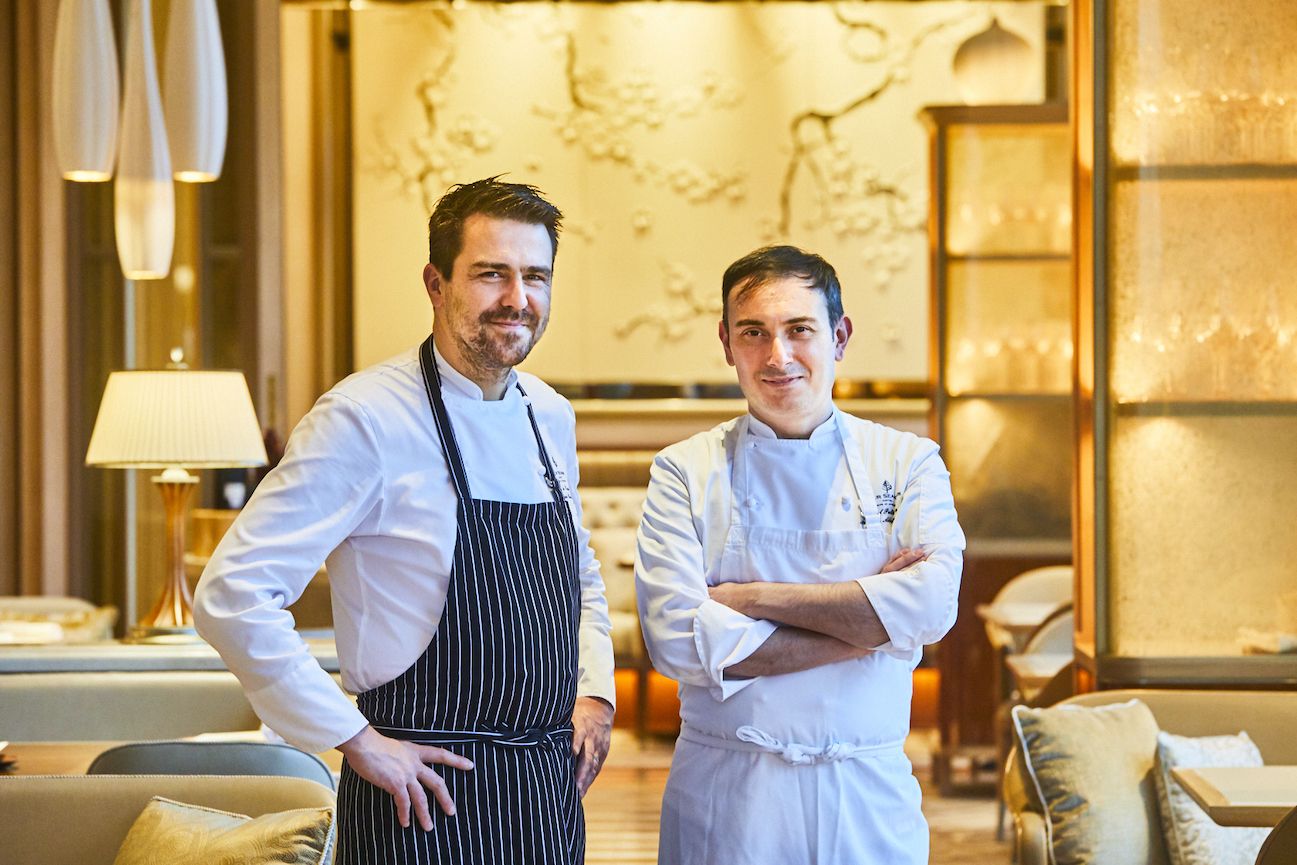
Japanese Sake x Chinese Cuisines – The story behind Japanese Sake served in Sang Kee Restaurant.
Japanese culture has always been popular in Hong Kong. Our way of eating is also in one way or another influenced by Japanese culture. When it comes to alcohol, Japanese Sake is definitely no stranger to Hong Kong people. Occasional drinkers, however, tend to consume Japanese Sake only when it is paired with sushi or Japanese food. Not until recently, you may begin to discover names of Japanese Sake appearing on the drink menus of different types of Chinese restaurants. Sang Kee Restaurant, a renowned Cantonese seafood restaurant located in Wan Chai district, is one of them.
You may wonder how this trend started— Mr. Jeff Wong, the second-generation successor of Sang Kee Restaurant, is here with us today to unveil the reasons behind the pairing between Japanese Sake and Chinese dishes in their restaurant.

Sang Kee Restaurant

Sang Kee Restaurant, recommended by Michelin for twelve times, is specialized in traditional Cantonese cuisine.
Sang Kee Restaurant, a time-honored restaurant recommended by Michelin for twelve times, is specialized in traditional Cantonese cuisine for decades— Popular dishes such as “baked chicken with salt”, “braised boxthorn in broth with pork liver” and “Signature congee freshly cooked with meatballs and mottled Spinefoot fish” captured the hearts of many, including celebrities and politicians in the city from far or near.

Baked chicken with salt

Braised boxthorn in broth with pork liver
Jeff helped with his family’s business along with his older brother in the restaurant since he was a child. He studied in Canada and worked in graphic design. Considering his parents being in their advancing years, Jeff and his brother finally decided to take over the family business. Since then, they have encountered countless difficult moments, such as SARS and COVID, while managing the business. The brothers stood strong in spite of the adversities they faced— They persisted in running the restaurant for the love and passion their parents held towards it; And with the strong will of inheriting and imparting the art of traditional Cantonese cooking.
While aligning the business to their parent’s principles, which is to offer a variety of nostalgic Cantonese home dishes, the brothers strive to be innovative. They began to include Japanese Sake in their menus aiming to bring more choices to their diners, as well as to enhance dining experiences for their loyal supporters.

Mr. Jeff Wong, the second-generation successor of Sang Kee Restaurant
“I have been interested in food pairings many years ago, but it has always been mainly red and white wine. I always thought there could be more. Recently, I have noticed that many people begin to pair Japanese Sake with Chinese cuisines. Some also begin to learn what dishes would pair well with Japanese Sake.” Jeff said.
Mr. Jeffrey Lau, who has known Jeff for many years, is the founder and editor-in-chief of “Umai Magazine”. It is known as the first Chinese magazine in Hong Kong that mainly promotes Japanese Sake drinking culture.

Mr. Jeffrey Lau, the founder and editor-in-chief of "Umai Magazine”.
Jeffrey thinks that many people hold the misconception that Japanese Sake and Cantonese food are difficult to combine due to the complexity of their flavors. But in fact, evolution of Sake has kept pace with the times— There are now countless Sake which can compete with Western table wine standards. Jeffrey believes that this may be one of the reasons why many Chinese restaurants have recently begun to serve Sake.
“I have noticed many customers bringing their favorite Japanese Sake to our restaurant. I then started in researching which of our dishes are suitable for Sake pairing.
I would personally recommend “deep-fried fresh squid in salt” pairing with sparkling Sake as appetizers. I would also recommend our signature dishes “fried prawn with supreme soy sauce” and “steamed threadfin with chicken oil & Chinese bacon” pairing with Nama Sake, Muroka Nama Genshu, or even with Nigori Sake. You'll be surprised how well they go together.” Jeff said.

Deep-fried fresh squid in salt pairing and sparkling Sake

Steamed threadfin with chicken oil & Chinese bacon and Nama Sake
Jeffrey said Japanese Sake and Cantonese cuisine share some very similar characteristics— Both of them pay great attention to their “original flavors” and can be very particular when it comes to their production processes. These similarities serve as one of the essential elements of unfolding endless possible ways of pairing. Some people even describe Japanese Sake as the best seasoning for Chinese cuisine.
Other than his beloved family and friends, Jeffrey also enjoys bringing his foreign customers to dine here in Sang Kee. Jeffrey especially loves to pair signature dishes like "home-style lotus root patties” and "sweet and sour pork” with the refreshing Yamahai Junmai Sake for his clients from overseas— They would always leave the restaurant satisfied, amused by the whole new Chinese dining experience brought by Jeffrey’s choices of Sake pairing.

Home-style lotus root patties
Jeff also feels the changes Sake brought to his restaurant. “Since we started serving Sake, in addition to the growth in business, I have also realized that customers who enjoy Japanese Sake are way more than we thought! There were also customers who came to our restaurant to hold Sake-themed dinners. This gives me the feeling that there has been a trend of pairing Japanese sake with Chinese food in Hong Kong. In the past, many of our customers and friends would bring a few dozen bottles of wine to our place for dinner, but now, it is all about Japanese Sake.”
Jeffrey agrees with his old friend Jeff. He said Sake’s popular trends of flavors have been changing and shifting during the past 30 years. In the 1980s and 1990s, spicy and light flavors were popular; During the late 1990s and the new millennium, everyone sought after the gorgeous Daiginjo and Kun Shu; Until nowadays, the trend has evolved into “a hundred flowers blooming”— each with their unique styles, each being admired by their own supporters who are eager to discover their own ways of enjoying their favorite Sake. The number of these adventurous Sake-lovers are increasing rapidly.
“By pairing our dishes with Sake, customers have a different enjoyment and experience when dining. This makes me see more diversity in Chinese cuisine, and I am very happy to see this phenomenon.” Jeff said with a smile.
Jeff is one of the pioneers in the Chinese restaurant industry who blends tradition with innovation. We believe that with Jeff's innovative ideas, he will definitely be able to propel Chinese dishes and Japanese Sake pairing further within the industry.
- Sang Kee Restaurant
-
Address: 3/F, Sunshine Plaza, 353 Lockhart Road, Wan Chai
Business Hours: Sunday to Monday 11:30-14:30, 18:00-22:30
Tel: 25752236,25752239






